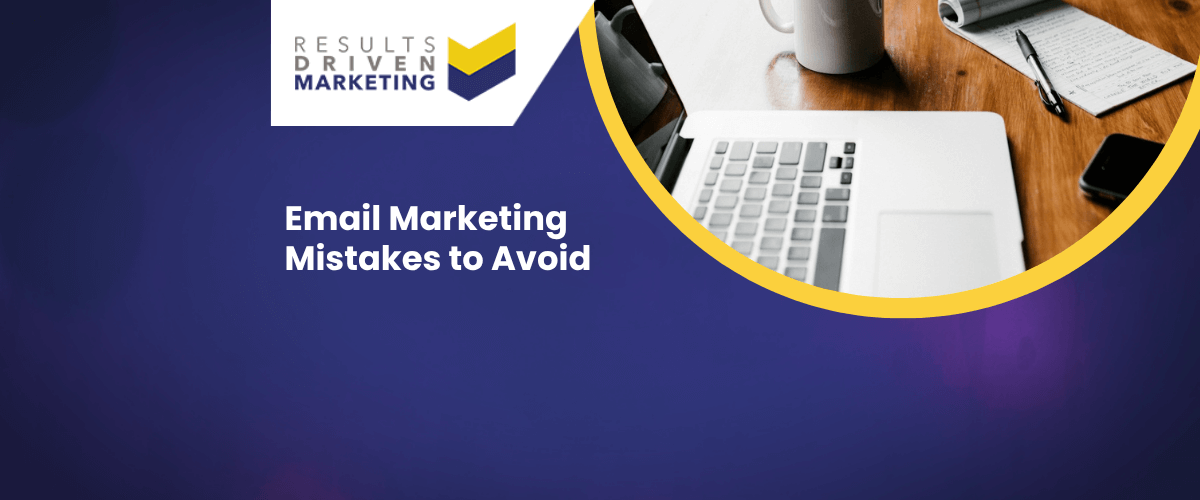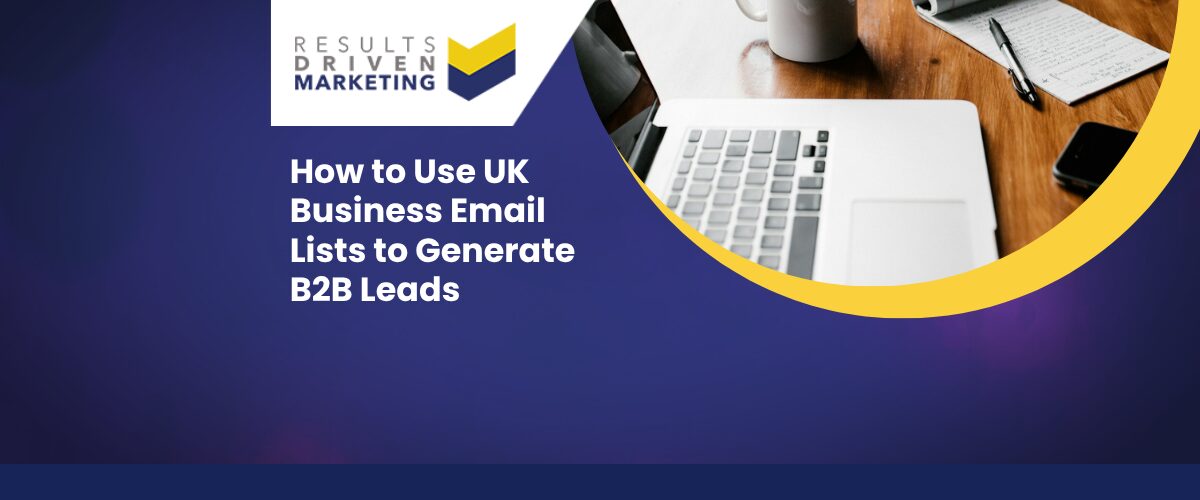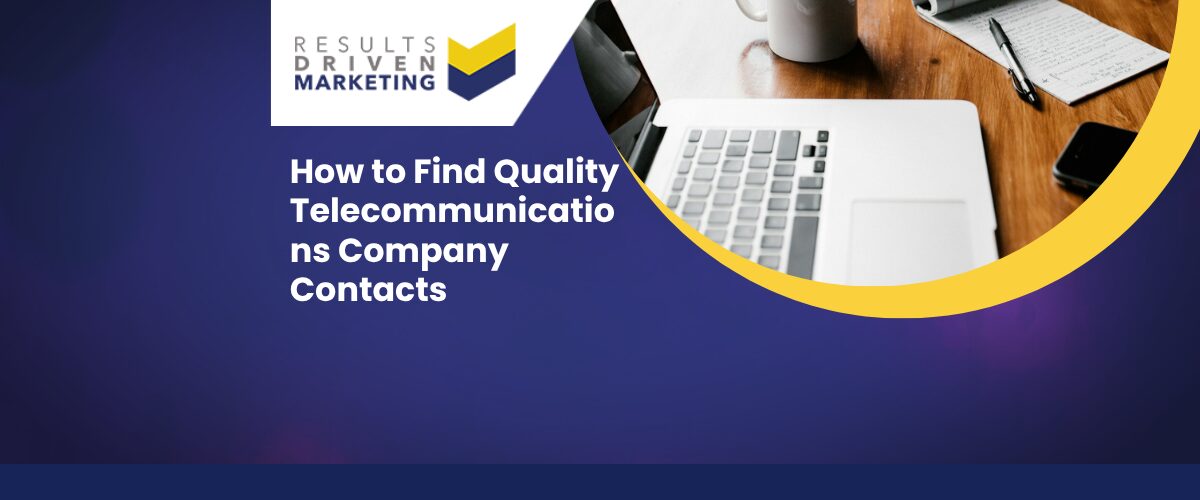
Email Marketing Mistakes to Avoid
Email marketing mistakes to avoid are more than just a list of don’ts; they’re pivotal lessons that can shape the success of your campaigns. In the digital age, where inboxes are flooded with messages daily, standing out is crucial. But, how do you ensure your emails hit the mark every time?
Explore this article to learn how to avoid common problems and gain practical advice on how to improve your email marketing. Whether you’re a seasoned marketer or just starting out, these tips are tailored to help you navigate the intricate world of email marketing with finesse.
Table of contents:
Overview of Email Marketing Mistakes
Let’s face it, email marketing is a bit like walking a tightrope. One misstep and you could find your campaign in a free fall. From overloading your audience with sales-heavy language to neglecting the power of personalisation, the list of email marketing mistakes to avoid is quite extensive.
It’s about striking that perfect balance between informative and engaging, without tipping over into the realm of annoyance or irrelevance.
The Importance of Avoiding Email Marketing Mistakes
Why all this fuss about avoiding email marketing mistakes, you ask? Well, it’s simple. Your email campaign is often the first line of communication between you and your potential customers. It’s your digital handshake if you will.
Making a blunder here could mean the difference between a lasting relationship and a lost opportunity. So, paying heed to the email marketing mistakes to avoid isn’t just good practice; it’s essential for the health of your business.
Common Email Marketing Mistakes to Avoid
Alright, let’s get down to the nitty-gritty. We’ve talked about the why and the how, but what exactly are these email marketing mistakes to avoid?
Here’s a rundown of some common blunders that could be sabotaging your email campaigns.
Selling Too Hard
First up, the hard sell. We get it, you’ve got something awesome to offer, but there’s a fine line between enthusiasm and pushiness. Here’s the deal:
- Subtlety is Your Friend: Ease into your sales pitch. Build a narrative.
- Focus on Benefits: Highlight how your product or service can solve a problem or improve your subscribers’ lives.
- Create a Dialogue: Encourage feedback and questions. Make it a two-way conversation.
Failing to Optimise for Mobile
In today’s world, if your emails aren’t mobile-friendly, you’re missing a trick. A big one. Here’s why optimizing for mobile is non-negotiable:
- Mobile Usage is Sky-High: Most people check their emails on their phones. It’s that simple.
- First Impressions Matter: An email that looks wonky on mobile is likely to be ignored or deleted.
- User Experience is Key: Make sure your emails are easy to read and interact with on any device.
Neglecting Sender Reputation
Your sender’s reputation is like your credit score in the world of email marketing. Neglect it at your peril. Here’s what you need to know:
- Consistency is Crucial: Regular, quality emails help build a solid sender reputation.
- Avoid Spam Triggers: Certain words and tactics can land you in the spam folder. Steer clear.
- Monitor Your Metrics: Keep an eye on your open rates and bounce rates. They’re indicators of your sender’s reputation’s health.
Avoiding Customer Segmentation
One size does not fit all. That’s where customer segmentation comes into play. Here’s the lowdown:
- Personalisation Wins: Tailored content based on demographics, interests, or behavior hits the mark.
- Increased Relevance: Segmented emails ensure your content is relevant to each subset of your audience.
- Better Engagement: When your content resonates, engagement naturally follows.
Failing to Include Clear Calls to Action
Last but not least, is the call to action (CTA). It’s the cherry on top of your email marketing sundae. Here’s why it’s crucial:
- Direction and Purpose: A clear CTA tells your subscribers what to do next. It gives your email purpose.
- Boosts Conversions: A compelling CTA can nudge subscribers towards a purchase or another desired action.
- Clarity is Key: Keep your CTAs simple, straightforward, and hard to miss.
Neglecting Analytics
Let’s talk numbers for a second. Analytics are like the GPS for your email marketing journey. Ignoring them? Well, that’s like driving blindfolded. Here’s the scoop:
- Track Your Performance: Open rates, click-through rates, conversions – these metrics are gold.
- Adjust and Adapt: Analytics not looking great? Time to tweak your strategy.
- Knowledge is Power: The more you know about how your campaigns perform, the better you can make them.
Writing Poor Subject Lines
Subject lines are your first impression, and we all know how much those count. A lackluster subject line? It’s like a missed handshake. Here’s the deal:
- Be Clear and Catchy: You want to grab attention but also make it clear what the email is about.
- Avoid Clickbait: Nobody likes to feel tricked. Keep it honest and intriguing.
- Test and Learn: Try different styles and see what resonates with your audience.
Including Too Many Images
Images can be great, but too many? That’s like having too much icing on your cake. Here’s why balance is key:
- Loading Times: Too many images can slow down loading times, and patience is a rare commodity these days.
- Spam Filters: Overloading with images can trigger spam filters. Not where you want to be.
- Balance is Best: A mix of text and images is usually your safest bet.
Sending Emails at the Wrong Time
Timing isn’t just a thing in comedy; it’s crucial in email marketing too. Send an email at the wrong time, and it’s like whispering in a hurricane. Here’s what to remember:
- Know Your Audience: When are they most likely to check their emails?
- Test Different Times: Experiment and see what timing gets the best response.
- Avoid Overcrowded Inboxes: Try to find a time when your email won’t get lost in the daily flood.
Forgetting to Personalise Email Campaigns
Personalisation is the secret sauce of email marketing. Without it, your emails might as well be saying, “Hey, you there!” Here’s why it matters:
- Make a Connection: Personalised emails make your subscribers feel seen and valued.
- Boost Engagement: Emails that resonate on a personal level are more likely to be opened and acted upon.
- Data is Your Friend: Use subscriber data to tailor your content.
Not Making Emails Accessible
Accessibility is a must, not a maybe. Inaccessible emails are like hosting a party and forgetting to send out the invites. Here’s the lowdown:
- Inclusive Design: Ensure your emails can be easily read and understood by everyone.
- Alt Text for Images: Don’t leave screen reader users in the dark.
- Simple Layouts: Cluttered emails are a no-go. Keep it clean and clear.
Not Authenticating Sender Domain and IP Address
Authentication is like your email’s ID card. Without it, you might not get past the bouncer (aka spam filters). Here’s what you need to know:
- Build Trust: Authentication helps build trust with email providers and recipients.
- Reduce Spam Flags: Proper authentication reduces the chances of your emails being marked as spam.
- Technical Setup: It might sound techy, but setting up SPF, DKIM, and DMARC is worth the effort.
Not Warming Up Your Domain
A cold domain is like trying to sprint without a warm-up. You might pull a muscle, or in this case, end up in the spam folder. Here’s the drill:
- Start Slow: Gradually increase your sending volume.
- Build a Good Reputation: A warm-up period helps establish your domain as a legitimate sender.
- Patience Pays Off: It takes time, but it’s a crucial step for long-term success.
Not Complying with Email Laws
Compliance isn’t just a fancy word; it’s a must. Ignoring email laws is like driving without a seatbelt. Here’s why it’s non-negotiable:
- Respect Privacy: Laws like GDPR and CAN-SPAM are all about respecting subscriber privacy.
- Avoid Penalties: Non-compliance can lead to hefty fines. Ouch.
- Build Trust: Complying with laws shows your subscribers that you value and respect their rights.
Using a No-reply Email ID
A no-reply email ID is like a one-way street. It says, “We’ll talk; you listen.” Not the best approach. Here’s the alternative:
- Encourage Conversation: Use an email ID that invites responses.
- Build Relationships: Two-way communication is key to building lasting relationships with your subscribers.
- Feedback is Gold: Replies from your subscribers can provide valuable insights.
Sending Bulk Emails Without Strategy
Bulk emails without a strategy? That’s like throwing spaghetti at the wall and hoping some sticks. Here’s why strategy is key:
- Targeted Approach: Tailor your emails to different segments of your audience.
- Quality Over Quantity: It’s not about how many emails you send; it’s about how effective they are.
- Plan and Execute: A well-thought-out strategy ensures your emails have a purpose and a goal.
Not Making Emails Responsive for All Devices
Let’s face it, we’re living in a multi-device world. Emails that don’t play nice with all devices? That’s like showing up to a costume party in everyday clothes. Here’s the lowdown:
- Universal Compatibility: Your emails should look fabulous whether they’re opened on a phone, tablet, or computer.
- User Experience: A responsive design ensures a smooth, enjoyable experience for your subscribers.
- No Excuses: With today’s tools and technology, making emails responsive is easier than ever.
Not Sending Welcome Emails
Skipping welcome emails is like not greeting guests at your party. It’s a missed opportunity to make a great first impression. Here’s why they’re important:
- Warm Welcome: It sets the tone for your relationship with new subscribers.
- Engagement Boost: Welcome emails often have higher open rates. Capitalize on that.
- Brand Introduction: It’s your chance to introduce your brand and what subscribers can expect.
Not Sending Emails Consistently
Consistency is key. Sending emails haphazardly is like popping in and out of a conversation. It’s confusing and off-putting. Here’s the deal:
- Build Expectations: When subscribers know when to expect your emails, they’re more likely to engage.
- Stay Top of Mind: Regular emails keep you on your subscribers’ radar.
- Find Your Rhythm: Not too much, not too little. Find a frequency that works for you and your audience.
Not Segmenting Your Email List
One-size-fits-all? Not in email marketing. Not segmenting your email list is like serving the same dish to everyone, regardless of their tastes. Here’s why segmentation matters:
- Personalized Experience: Tailored content based on interests, behaviors, or demographics hits closer to home.
- Increased Relevance: Segmentation ensures your content is relevant to each group of subscribers.
- Better Results: Segmented campaigns often see better engagement and conversion rates.
Not Proofreading Emails Before Sending
Sending an email full of typos is like showing up to a meeting with spinach in your teeth. It’s distracting and unprofessional. Here’s the reminder:
- First Impressions: Spelling and grammar mistakes can tarnish your brand’s image.
- Clarity and Accuracy: Errors can lead to misunderstandings or misinformation.
- Double-Check: Always proofread, or better yet, have someone else take a second look.
Not Being Inclusive in Emails
Inclusivity in emails is like making sure everyone at your party feels welcome and valued. It’s essential. Here’s why:
- Diverse Audience: Your subscribers come from all walks of life. Acknowledge and embrace that.
- Positive Brand Image: Inclusivity reflects positively on your brand and values.
- Universal Design: Use language, images, and design that are accessible and respectful to all.
Not Optimising Subject Lines
Subject lines are your email’s handshake. Not optimising them is like offering a limp handshake – not very compelling. Here’s what to do:
- Be Clear and Concise: Get to the point and make it interesting.
- Avoid Spammy Words: Certain words can trigger spam filters. Steer clear.
- Test and Tweak: Experiment with different styles and see what works best.
Not A/B Testing Emails
Not A/B testing your emails is like guessing the winner of a race without watching it. You’re flying blind. Here’s the scoop:
- Informed Decisions: A/B testing provides valuable insights into what resonates with your audience.
- Continuous Improvement: Use the results to refine and enhance your email campaigns.
- Test Different Elements: From subject lines to call-to-actions, there’s a lot you can test.
Using Clickbait-y or Misleading Subject Lines
Clickbait-y subject lines are like false advertising. They might get you clicks, but at what cost? Here’s the caution:
- Trust is Key: Misleading subject lines can erode trust in your brand.
- Short-term Gains, Long-term Losses: You might see a spike in opens, but it’s not sustainable.
- Be Honest and Enticing: You can be interesting without being deceptive.
Skipping A/B Testing
We’ve touched on this, but it’s worth repeating. Skipping A/B testing is like ignoring a treasure map. You’re missing out on valuable insights. Here’s the reminder:
- Data-Driven Decisions: A/B testing takes the guesswork out of your strategy.
- Small Changes, Big Impact: Sometimes, a minor tweak can make a significant difference.
- Test Regularly: Make A/B testing a regular part of your email marketing routine.
Hitting “Send” Without Testing First
Sending an email without testing it first is like serving a dish you haven’t tasted. It’s risky. Here’s what to do:
- Test on Different Devices: Ensure your email looks good on various screens.
- Check Links and CTAs: Make sure everything is clickable and leading where it should.
- Preview and Adjust: Use the preview function and make adjustments as needed.
Missing Chances To Collect Email Sign-ups
Not seizing opportunities to collect email sign-ups is like leaving money on the table. Here’s how to make the most of it:
- Optimise Your Website: Make sure sign-up forms are visible and enticing.
- Leverage Social Media: Use your social platforms to encourage sign-ups.
- Offer Value: Give people a reason to subscribe, whether it’s exclusive content, discounts, or insights.
What are the Advantages of Avoiding Email Marketing Mistakes?
Steering clear of common email marketing blunders isn’t just about damage control. There are tangible benefits to be reaped here.
Improved ROI and Engagement
First off, by avoiding these email marketing mistakes, you’re setting the stage for a better return on investment (ROI). Think about it. A well-crafted, targeted email that resonates with your audience is more likely to lead to conversions.
Plus, when you avoid common pitfalls, you increase engagement. People are more likely to interact with content that feels personal and relevant.
Building Trust with Subscribers
Another significant advantage of dodging these email marketing mistakes is trust-building. When your emails hit the right note, you’re not just selling a product or service; you’re cultivating a relationship.
Subscribers who feel valued and understood are more likely to become loyal customers.
Key Considerations When Avoiding Email Marketing Mistakes
Alright, so we’re on board with avoiding these mistakes. But what should we keep in mind to ensure we’re on the right track? Here are some key considerations:
Understanding Your Audience
First things first, know who you’re talking to. Understanding your audience is like having a roadmap. It guides your content, tone, and even the timing of your emails. Ask yourself:
- Who are my subscribers?
- What are their interests and pain points?
- How can my emails add value to their lives?
Crafting Effective Content
Content is king, they say, and they’re not wrong. Crafting effective content is a balancing act. It’s about being informative, engaging, and persuasive, all at once. Remember:
- Clarity is Key: Be clear and concise. Get to the point.
- Value-Add: Every email should offer something valuable to your subscribers.
- Call to Action: Don’t leave your readers hanging. What do you want them to do next?
Timing and Frequency of Emails
Timing is everything. Bombarding your subscribers with too many emails is a surefire way to the unsubscribe bin. On the flip side, radio silence isn’t great either. Find that sweet spot. Consider:
- Industry Standards: What’s the norm in your industry?
- Subscriber Preferences: When do your subscribers prefer to receive emails?
- Special Occasions: Can you tie your emails to events or holidays relevant to your audience?
Legal Compliance and Ethics
Last but certainly not least, legal compliance and ethics. This is non-negotiable. Abiding by laws like GDPR and CAN-SPAM isn’t just about avoiding fines; it’s about respecting your subscribers’ rights and privacy. Ensure:
- Permission-Based Marketing: Always get consent before sending emails.
- Transparency: Be clear about who you are and why you’re emailing.
- Easy Opt-Out: Make unsubscribing as easy as subscribing
FAQ
Q: How can I ensure my email list is of good quality?
A: Quality trumps quantity, always. Here’s how to ensure your list is top-notch:
- Opt-In Only: Make sure your subscribers have willingly signed up.
- Regular Cleaning: Remove inactive or unengaged subscribers periodically.
- Segmentation: Organize your list into relevant segments for targeted campaigns.
Q: What are the best times to send email campaigns?
A: Timing can be tricky, but here are some general tips:
- Test and Learn: Experiment with different times and days to see what works best for your audience.
- Industry Standards: Look at benchmarks in your industry for guidance.
- Subscriber Preferences: Consider when your subscribers are most likely to engage.
Q: How can I make my emails more engaging?
A: Engagement is the name of the game. Here’s how to up your game:
- Interactive Content: Polls, surveys, or quizzes can spice things up.
- Personalisation: Use subscriber data to tailor your content.
- Strong CTAs: Clear, compelling calls to action can drive engagement.
Q: What should I include in a welcome email?
A: Your welcome email is your first impression. Make it count:
- Warm Greeting: Start with a friendly hello and thank them for subscribing.
- Brand Introduction: Briefly introduce your brand and what you stand for.
- Expectation Setting: Let them know what kind of content they can expect and how often.
Q: How often should I send marketing emails?
A: It’s a balancing act. Here’s the gist:
- Not Too Much, Not Too Little: Find a frequency that keeps you on their radar without overwhelming them.
- Subscriber Preferences: Some subscribers might prefer weekly, others monthly. Offer options if possible.
- Consistency: Stick to a schedule so subscribers know when to expect your emails.
Q: What are some effective ways to segment my email list?
A: Segmentation is like organising your closet. It just makes everything easier. Here are some ways:
- Demographics: Age, location, gender, etc.
- Behaviour: Purchase history, website activity, email engagement.
- Interests: Based on survey responses or indicated preferences.
Q: How can I improve my email subject lines?
A: Your subject line is your foot in the door. Here’s how to make it strong:
- Be Clear and Concise: Get straight to the point.
- Create Curiosity: Pique their interest without being clickbait-y.
- Personalisation: Use their name or reference something relevant to them.
Q: What are some common pitfalls in email design?
A: Design can make or break your email. Watch out for:
- Cluttered Layout: Keep it clean and easy to navigate.
- Overuse of Images: Balance images with text.
- Poor Mobile Optimisation: Ensure it looks good on all devices.
Q: How important is mobile optimisation for emails?
A: In a word: very. With most people checking emails on their phones, mobile optimization is not optional. It’s essential.
Q: What are the legal considerations in email marketing?
A: Staying on the right side of the law is crucial. Here’s what to keep in mind:
- Consent: Always get permission to send emails.
- Unsubscribe Options: Make it easy for subscribers to opt out.
- Compliance: Familiarize yourself with laws like GDPR and CAN-SPAM.
Who are we?
Dedicated to lead generation, Results Driven Marketing provides myriad services SMEs can trust to deliver results.
Our marketing lists are guaranteed accurate to industry high standards, and GDPR compliant and our experience team means that if you are looking to buy data, they make them totally bespoke and highly relevant whether you are looking for email lists, direct mailing lists, or telemarketing lists.
Our email marketing software is highly rated. Responder provides the automation tools you need to put your marketing on autopilot.
We also supply email marketing solutions with our email marketing platform.
Call us today on 0191 406 6399 to discuss your specific needs.
Results Driven Marketing
info@rdmarketing.co.uk
0191 406 6399





